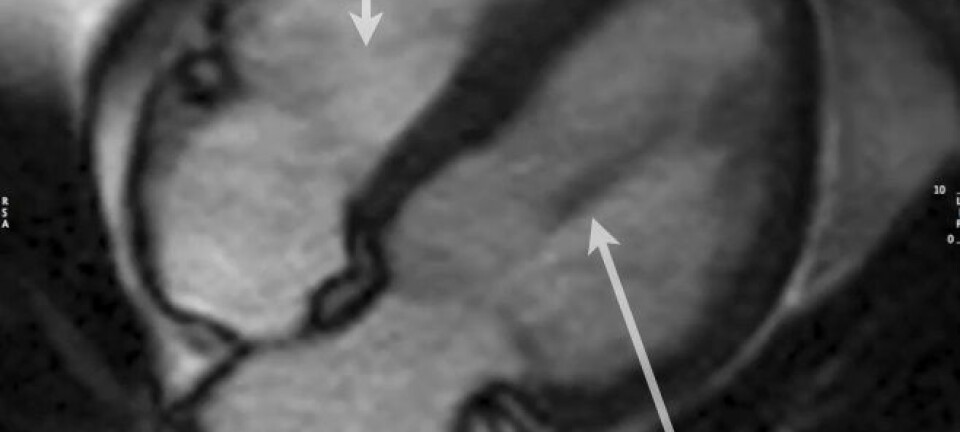
Four new type 2 diabetes risk variants identified
Scientists have discovered four previously unreported genetic variants affecting the risk of type 2 diabetes. One of them lowers the risk of developing the disease.
A team of Icelandic, Danish and Iranian scientists has identified four new genetic variants associated with the risk of developing type 2 diabetes.
The team had actually expected to find many more variants, but the fact that they found so few actually provided them with an entirely new insight into the disease.
”We estimate that there must be thousands of genetic variants that increase the risk of type 2 diabetes. Some obviously increase the risk more than others. Based on this study, we can conclude that these genetic variants only exist individually in very few of us, and that is brand new knowledge,” says the coordinator of the Danish section of the project, Professor Oluf Borbye Pedersen, who heads heads The Lundbeck Foundation Center for Genome research – Lucamp – and the Genetic Department of The Novo Nordisk Foundation Center for Basic Metabolic Research at the University of Copenhagen.
The new findings are published in the journal Nature Genetics.
Searching for rare diabetes risk genes
We estimate that there must be thousands of genetic variants that increase the risk of type 2 diabetes. Some obviously increase the risk more than others. Based on this study, we can conclude that these genetic variants only exist individually in very few of us, and that is brand new knowledge.
Oluf Borbye Pedersen
Existing technology and analytical methodology have so far only allowed researchers to systematically search for genetic risk factors that have a frequency of more than five percent in the population.
However, in the overall picture, all these frequently occurring risk genes only explain around ten percent of the genetic contribution to type 2 diabetes (T2D). This means that scientist have yet to identify a large majority of the genetic cause for an increased risk of developing the disease.
It was this elusive majority that the Nordic researchers set out to identify using a new method of analysis, which enabled them to find risk genes for T2D with a frequency of between five percent down to 0.1 percent of the population.
”We expected that using the new analysis method would enable us to identify many more gene variants that were associated with the risk of developing type 2 diabetes. These variants would then be relatively rare and may also have a higher risk associated with it,” says Pedersen.
Only four variants identified
We hope it will help motivate people to live healthier lives if we can tell them that by eating a healthier diet, exercising more and stopping smoking, their risk of developing the disease is reduced from, say, 15 percent to only a couple of percent, despite this person having a combination of many personal risk genes for type 2 diabetes.
Oluf Borbye Pedersen
To the researchers’ surprise, they only managed to identify four new genetic variants, but this in itself arms them with a lot of new knowledge about the disease:
According to Pedersen, the discovery of only four new genetic variants with a frequency between 0.1 and 5 percent in the population means that the majority of the risk genes for T2D are so rare that they only occur individually in less than one out of every thousand of us.
Many of the gene variants may in fact well be so rare that it is necessary to go all the way down to family level to find them – and there must be many of them, explains the professor:
“Up to now, 65 genetic variants associated with elevated or reduced the risk of T2D have been identified, and they are relatively well-represented in the population, but they do not increase the risk much individually. Conversely, there must be thousands of variants that are individually rare, but which collectively account for the greatest contribution to the genetic component of the disease.”
Rare gene variant lowers T2D risk
One of the four gene variants is of particular interest to the researchers. It only occurs in 1.5 percent of the population and actually lowers the risk of developing the disease by 50 percent.
This variant is also associated with increased height and body weight.
Carriers of this variant are, on average, 1.2 centimetres taller than the rest of the population and weigh around two kilos more.
”This is an interesting discovery, as increased body weight is normally associated with an increased risk of diabetes. However, here we find a gene variant which both increases body weight and reduces the risk of diabetes,” says Pedersen.
He believes this is possible since the gene may produce a variant of a protein that appears to provide a life-long normal production of insulin, which keeps T2D at bay.
“It will be really interesting take a closer look at the biological mechanisms associated with this gene variant,” he adds.
Long-term target: predicting the risk
The main conclusion of the study is that not a lot of type 2 diabetes risk genes with a frequency of between 0.1 and 5 percent can be found in the population.
This also means that new analysis methods are required to identify the thousands of rare gene variants that make up a majority of the genetic component of T2D.
For these to be identified in the future, argues Pedersen, gigantic studies with whole-genome sequencing of hundreds of thousands of participants may be required.
Once researchers reach that point, the professor believes that all the available data about genetic variants – rare and frequent ones alike – together with individual information about body weight , various other blood markers and lifestyle can be used to create an individual risk profile for developing diabetes.
“When we know about all the genetic variants and include people’s lifestyles in a personal risk file, we will able to assess pretty accurately what risk they have of developing type 2 diabetes within for instance a ten-year period,” he says.
“We hope it will help motivate people to live healthier lives if we can tell them that by eating a healthier diet, exercising more and stopping smoking, their risk of developing the disease is reduced from, say, 15 percent to only a couple of percent, despite this person having a combination of many personal risk genes for type 2 diabetes.”
-------------------
Read the Danish version of this article at videnskab.dk
Translated by: Dann Vinther










